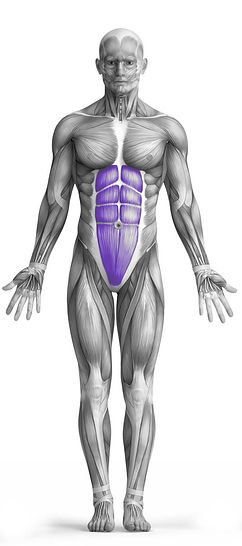Side Plank 101 Video Tutorial
0

Exercise Synopsis
Target Muscle Group
Abs
Secondary Targets
Execution
Isolation
Force Type
Static
Required Equipment
Bodyweight
Fitness Level
Beginner
Variations
None
Alternatives
None
Timer
Hour
Minute
Second
Stopwatch
00:00:00:00
Overview
The Side Plank is a bodyweight exercise designed to strengthen the abdominal muscles, with a primary focus on the obliques, and provide secondary benefits to the lower back. It involves holding a static position on one side of the body, supported by the forearm and the edge of one foot, creating a straight line from head to heels. This exercise enhances core stability, improves posture, and supports overall spinal health by engaging deep stabilizing muscles. The Side Plank is an effective, low-impact workout that requires no equipment, making it accessible for various fitness levels and easy to perform at home or in the gym.
How to Perform
The Side Plank is a powerful core-strengthening exercise that targets the obliques while also improving balance and stability.
To perform this exercise, begin by lying on one side with your legs fully extended and stacked on top of each other. You can choose to place a mat underneath for comfort, though it is not required.
Position your lower arm to support your weight, either with your forearm resting on the ground or your hand placed flat for a full-arm extension, depending on your preference and comfort level.
Engage your core and lift your hips off the ground, aligning your body in a straight line from head to heels. Avoid letting your hips sag or rise too high.
Maintain this position for as long as you can while focusing on steady breathing. You should feel the tension primarily in your obliques and abs.
Once you complete the hold, lower your hips gently to the ground, switch sides, and repeat the movement on the opposite side to ensure balanced muscle development.
For added challenge, you can incorporate variations such as raising the top leg or arm to engage additional muscle groups and further improve balance.
★ Bonus: For exercises that involve external weights (such as dumbbells, barbells, or machines), the One Rep Max (1RM) calculator can help you estimate your maximum lifting capacity. Use it to track your strength progress and adjust your training for optimal results.
Tips
Keep your core engaged and avoid letting your hips drop or sag during the Side Plank. Your body should remain in a perfectly straight line from head to heels.
Perform the exercise near a mirror or use a reflective surface to check your alignment and ensure proper form throughout the movement.
Aim to hold the position for 60 seconds if possible, focusing on maintaining stability and correct posture.
To make the exercise more challenging, gradually increase the duration of your hold as your strength and endurance improve.
How Not to Perform
Avoid Letting Your Hips Drop: Sagging hips reduce the effectiveness of the exercise and can strain your lower back. Keep your hips lifted to maintain a straight line from head to heels.
Don’t Over-Arch Your Back: Overarching your lower back shifts the focus away from the core muscles and may cause discomfort or injury. Engage your abs and keep your spine neutral.
Avoid Twisting Your Body: Twisting your torso compromises stability and reduces the activation of the obliques. Keep your shoulders and hips stacked vertically.
Do Not Hold Your Breath: Holding your breath increases tension and can cause fatigue. Instead, breathe deeply and consistently to maintain focus and endurance.
Avoid Leaning Forward or Backward: Leaning in either direction places unnecessary stress on your shoulders and lower back. Keep your body aligned in a single plane.
Do Not Rely on Momentum: Lifting or lowering your hips too quickly diminishes control and focus on the obliques. Use slow, controlled movements to engage the target muscles effectively.
Avoid Overloading the Supporting Shoulder: Ensure your shoulder is directly above your supporting elbow or hand to avoid excess strain on the joint.
Don’t Neglect the Opposite Side: Skipping the opposite side creates muscle imbalances. Always perform the exercise on both sides for balanced core strength.
Avoid Starting with Long Durations: Holding the plank for too long when you're not ready can lead to poor form and fatigue. Begin with shorter holds and gradually increase the duration as your strength improves.
Do Not Rush Into Variations: Advanced versions like lifting a leg or arm can destabilize you if your core strength isn’t sufficient. Master the basic Side Plank with proper form before progressing.
Variations
Variations of fitness exercises refer to different ways of performing a specific exercise or movement to target various muscle groups, intensities, or goals. These variations aim to challenge the body differently, prevent plateaus, and cater to individuals with varying fitness levels.
Alternatives
Alternative exercises in fitness refer to different movements or activities that target similar muscle groups or serve the same training purpose as the primary exercise. These alternative exercises can be used as substitutes when the original exercise is unavailable or challenging to perform due to various reasons such as equipment limitations, injuries, or personal preferences.








